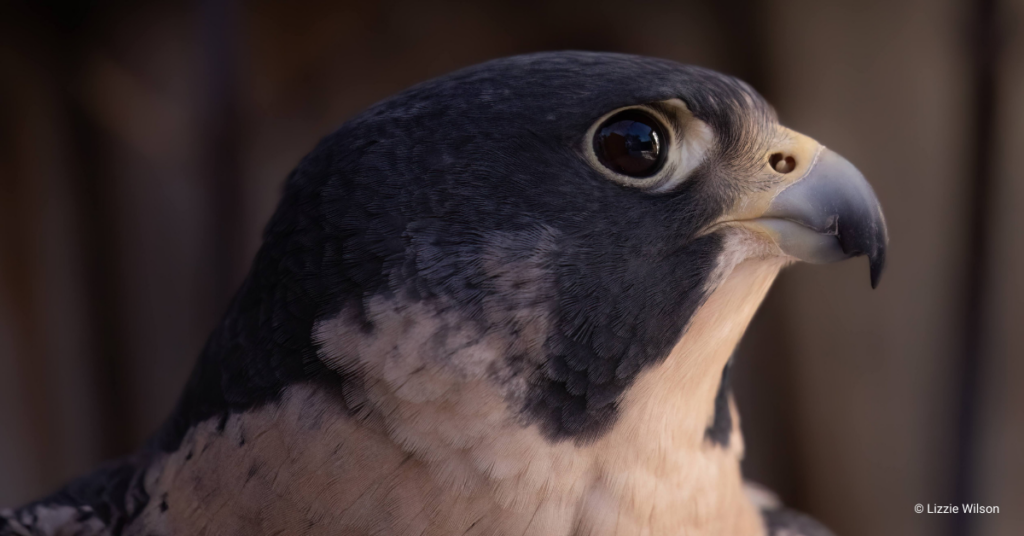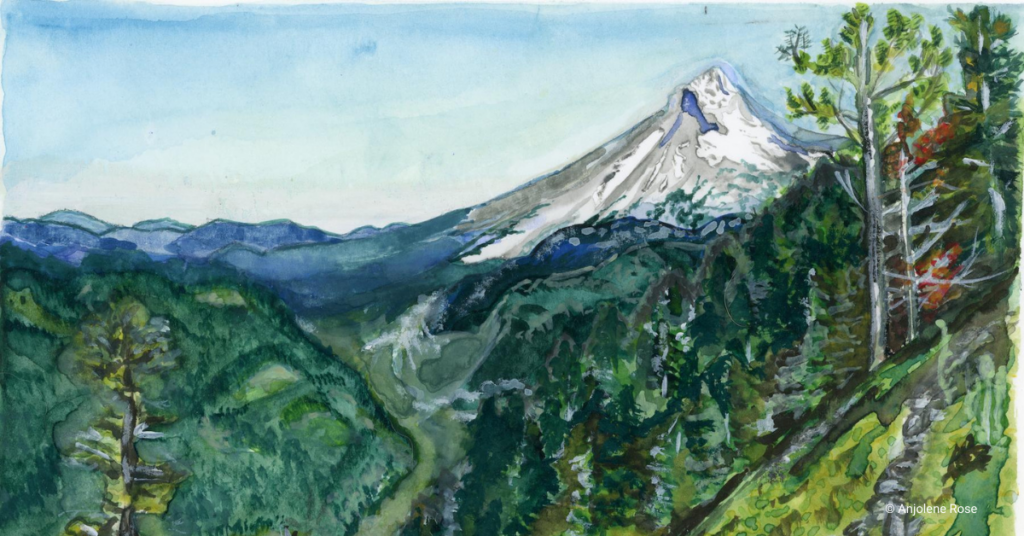Another year of raptor conservation, education, and research is in the books! This year, we’ve put in a collective effort to expand our community of supporters as well as the species and places we study. We are excited to share with you all the ways we have grown this year thanks to people like you!
Grew our team
Our Board of Directors has grown by four this year! We welcomed Sherry Liguori, Brian Logsden, Dave Deisley, and Leticia Olivarez to bring their passion for raptors to our board. Each brings with them special skills, from risk management to legal experience, and we are deeply grateful for their volunteer commitment to our work. On top of our board, we also added capacity in the Long-term Monitoring and Community Science department by creating a brand new position. Kate Sweet joined our team as a Field Biologist and has been a huge help in managing our seasonal crew, setting up migration sites, and pulling together reports. We are so grateful to have her on the team!

Awarded four international grants and our first follow-up grant
Our Global Raptor Research and Conservation Grant is in its third year, with our grant application period coming to a close at the end of this month for our fourth year of funding. With support from Kaddas Enterprises, we were able to provide funding for researchers in Chile, Bhutan, India, and Benin to study species such as the Endangered Pallas’s Fish Eagle and Hooded Vultures. This year, we also deepened our impact further by providing a former awardee, Ricardo Rodríguez-Villamil, with follow-on funding. Through our grant program, we aim to create relationships with our awardees and provide them with continued mentorship and support beyond one year of funding. There is still time to apply for our 2025 grant! Click here to apply by 12/31.

Closed the nature gap with new education programs
In the same thought of providing continued support, we took the same approach to our education programs. Two years ago, you helped us launch an effort to close the nature gap. Since then, we have realized that to truly accomplish this goal, we need to offer multiple visits to schools or community groups so that students can engage more deeply with the science and meet multiple Raptor Ambassadors. In addition to piloting these in-depth programs, we delivered our first Autism spectrum program aimed to engage learners through more tactile and sensory methods. We can’t wait to continue to deliver more of these programs in 2024 to communities who do not typically have access to wild spaces due to ability or income.
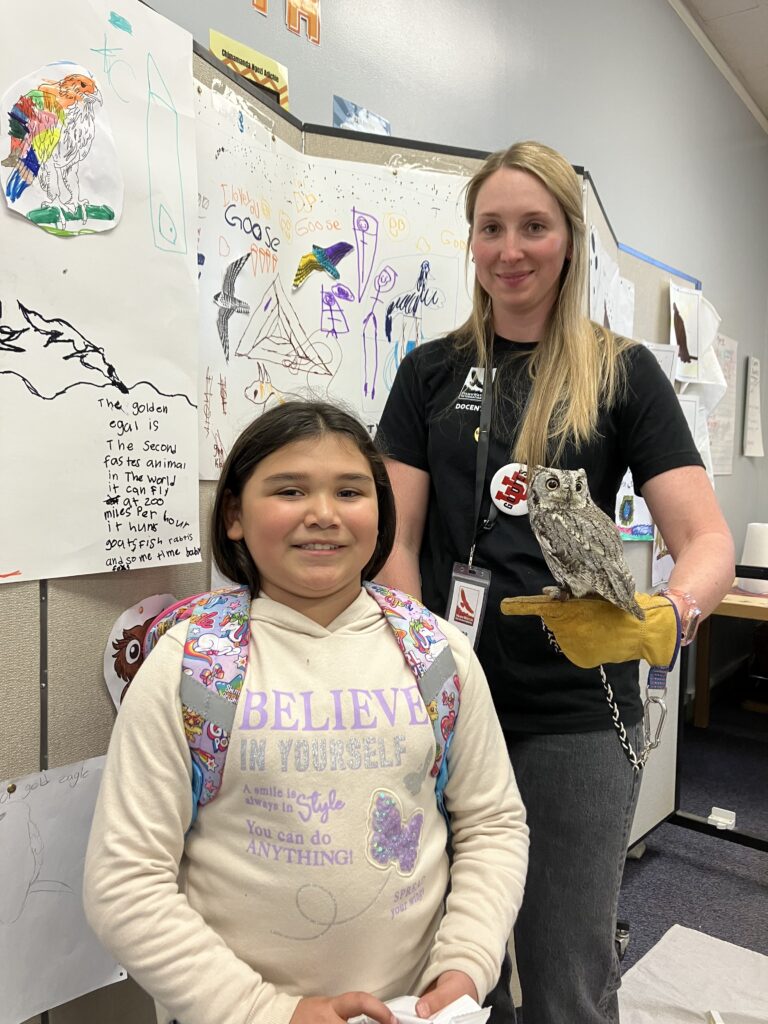
Published three papers on our research studying American Kestrels
Our scientists have been working hard to get not one, not two, but THREE papers published on our long-term monitoring of American Kestrels. In studying kestrels in Utah, Arizona, and along the Idaho/Washington border, we gathered preliminary data on rodenticides in American Kestrels and documented Spraddle-leg in nestlings. Through publishing these papers, we hope to provide deeper insight to industry and other researchers on actions we can take to help these declining falcons.

Rediscovered the lost cheetah of Djibouti
While taking part in a broad biodiversity study in Djibouti, our team discovered something incredible—the first sighting of a cheetah in over three decades! What was once thought to be extinct in the region, we were able to capture evidence on a trail camera of a cheetah in the area. Although a bit unexpected for our team of raptor scientists, we will always celebrate a conservation success!

Completed our first field season monitoring Mexican Spotted Owls
In collaboration with the Bureau of Land Management, we kicked off our first field season, tracking down Mexican Spotted Owls in southern Utah. These Threatened birds need help if we hope for their populations to recover, and that starts with finding these elusive birds. We were thrilled to report that we discovered nine Mexican Spotted Owls throughout five of the seven canyons we monitored!
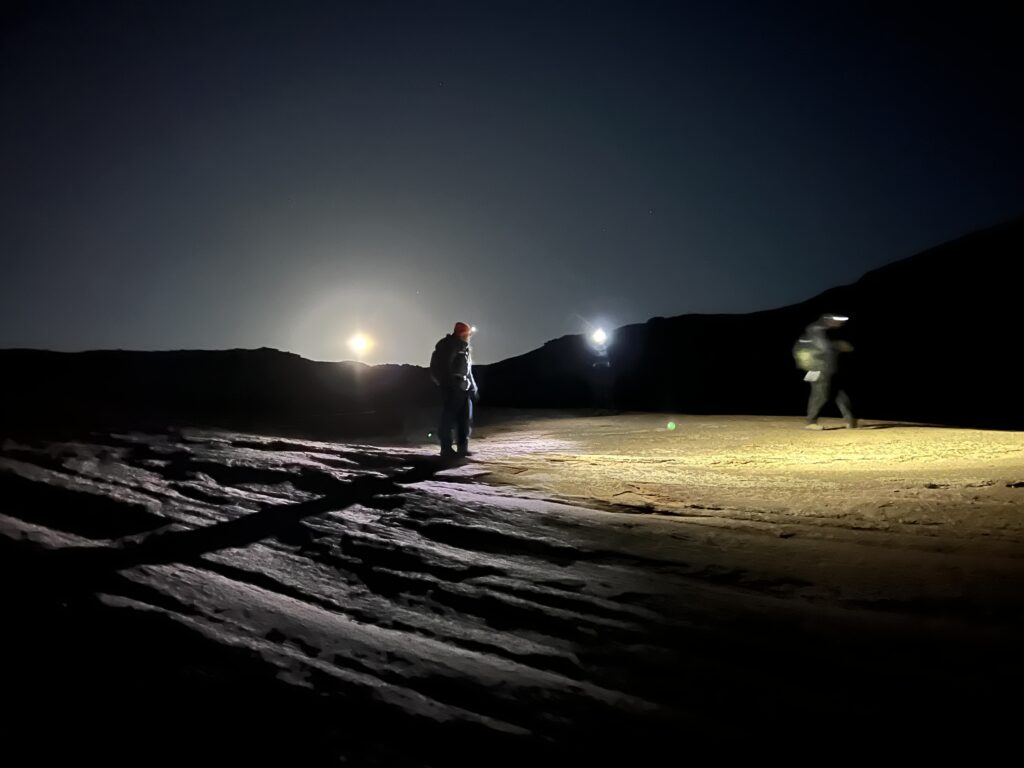
Launched our new website!
After over a year in the making, we finally have a new website! Our website had not been updated since the early 2010s and was in need of a makeover. Not only was the site dated to look at, but also hard to navigate. Through this re-design, we were able to integrate more of the incredible photos and videos of our research, as well as interactive maps, to make the site more engaging. More updates are set to come in the new year, so we hope you come back to keep visiting us!

Completed our first year of Jerry Liguori Raptor Conservation Scholarship funding
After launching our scholarship program at the end of 2022, the inaugural awardees of the Jerry Liguori Raptor Research & Conservation Scholarship carried out their projects in 2023. Thanks to supporters like you, our awardees were able to establish a network of nestboxes for American Kestrels, provide birding tours, field guides, and binoculars, and host an event for essential volunteers. We were also able to award our second round of awardees, which you can read more about here.

Featured in two books
For you bird nerds and bookworms, you can take a deep dive into our research in two incredible books that came out this year. The acclaimed author of “The Genius of Birds” and New York Times best-seller Jennifer Ackerman’s latest work is all about owls. In her newest work, What an Owl Knows, you can find HWI’s Dr. Dave Oleyar mentioned for his work leading our Following Forest Owl program. Of course, Jennifer did it again and upheld her NY Times best-seller title with this owlsome book. A few months later, Ben Goldfarb featured our research studying eagle collisions along roadsides in his book Crossings: How Road Ecology is Shaping the Planet. Since its publication, it has been named one of the best books of 2023 by outlets including the New York Times, the New Yorker, Smithsonian, and Science News! We also had Ben come join us in Salt Lake City for a public panel discussion and book signing. If you are looking for new reads to add to your library, consider these birdy books!
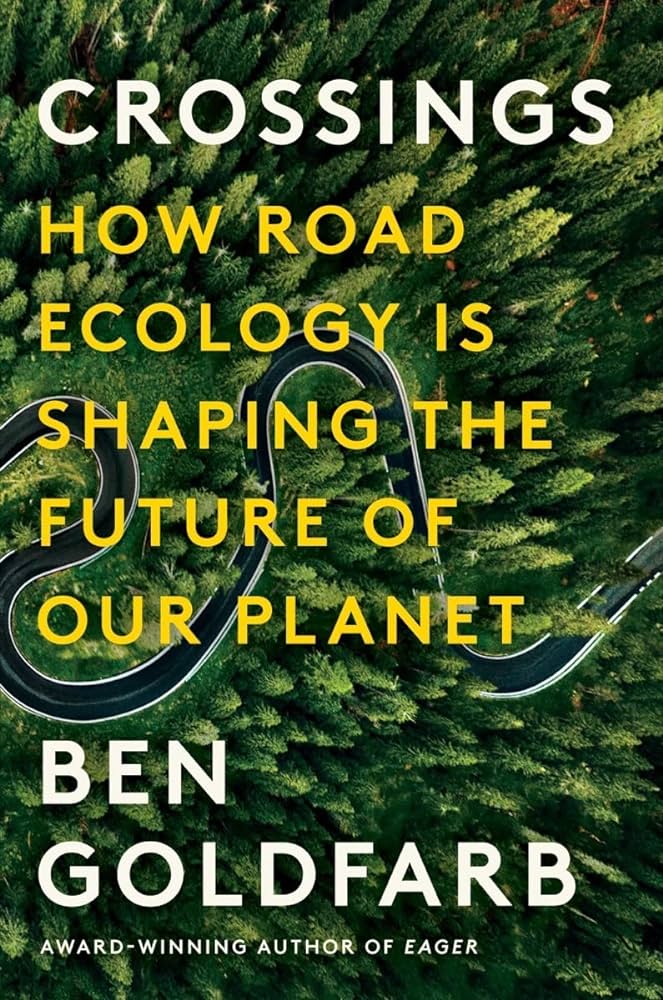
Welcomed Banshee to our flock
After the loss of our beloved Short-eared Owl Ambassador Galileo, our flock was short an owl. Although Galileo can never be replaced, we were thrilled to receive a call only a few months later that an imprinted Barn Owl needed a new home. Immediately, we knew that this owl was going to make a great Raptor Ambassador due to her calm and curious demeanor. If you are wondering how she got her name, Banshee, then you should head over to our TikTok account to see her pick out her very own name!
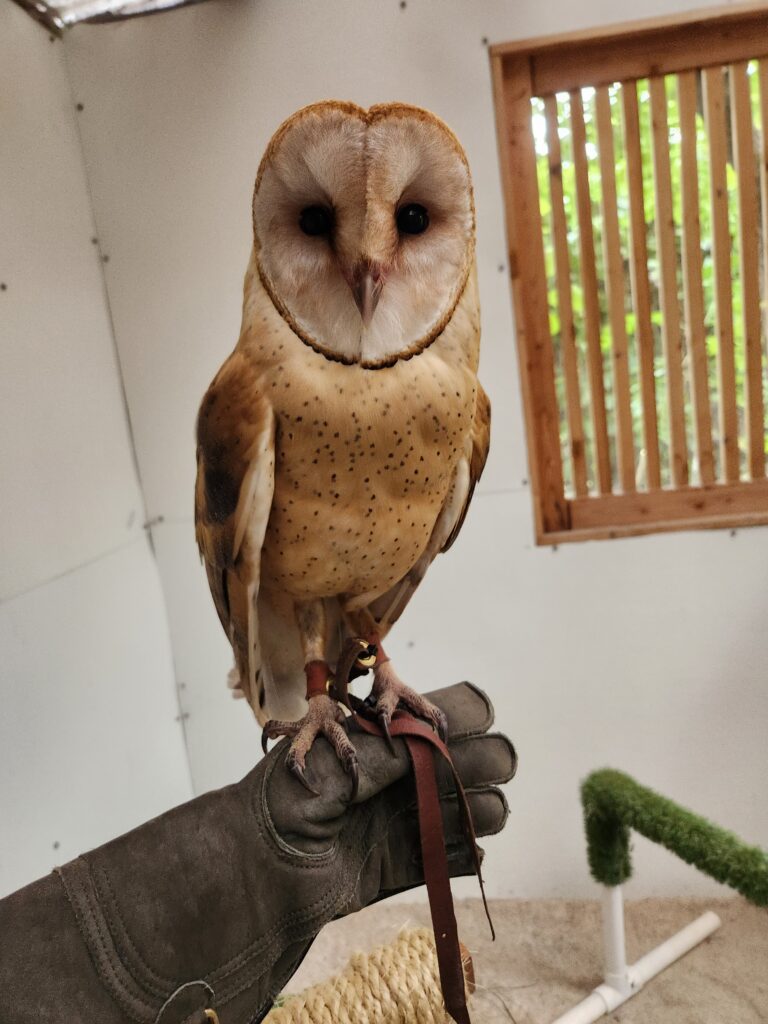
Counted over 1 million raptors this fall
Migration is always a special time of year. We band together to form a team across the American West to count every single raptor that flies by. This year, we counted 1.3 million birds, 1.2 of which were counted at our Corpus Christi HawkWatch! This year shows how important it is to count every year so we can determine whether or not this year is a red herring or a trend that will continue.
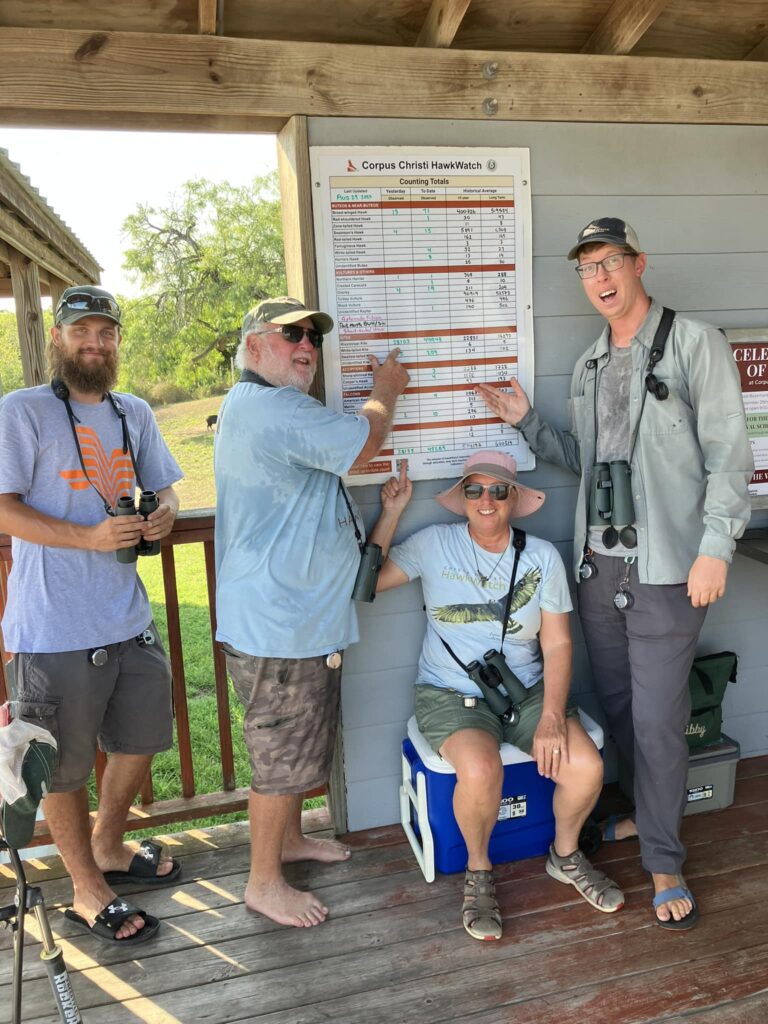
Used technology to learn more about Golden Eagles
At the start of this year, we recovered one of our oldest running transmitters after collecting 9 years of data! This individual generated 39,143 GPS data points that have been referenced in numerous publications to further understanding and conservation of this species. Now, we are closing out the year by implementing new technology to continue our research on Golden Eagles. With our new passive perch scale, we are able to weigh wild eagles who stop by to visit our carcasses placed in Utah’s West Desert as part of our Golden Eagle Winter Feeding program. We are excited to soon share with other researchers how they can create these scales to be utilized across the wildlife conservation field!

This blog was written by Sammy Riccio, HWI’s Communications Manager You can learn more about Sammy here.

